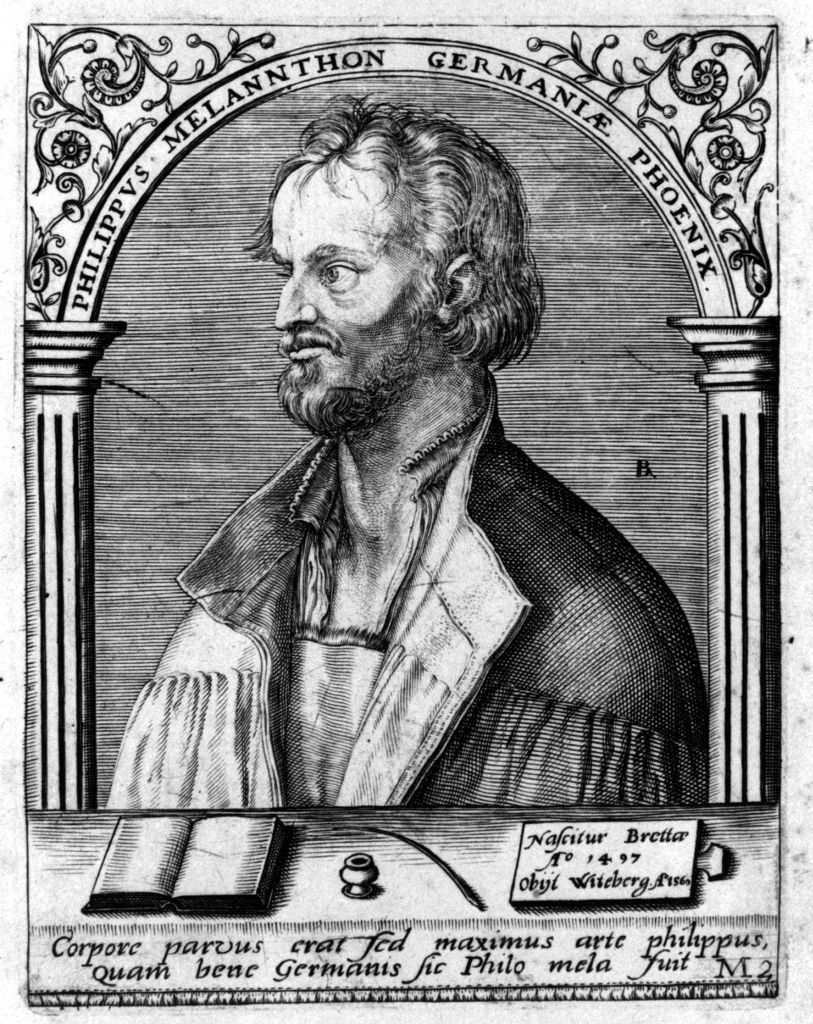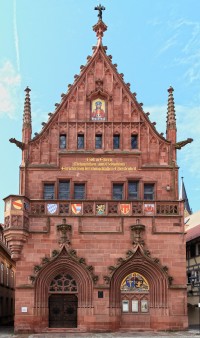Brustbild nach links vor grauem Hintergrund in architektonischen Rahmen mit lateinischer Inschrift: "PHILIPPVS MELANNTHON GERMANIAE PHOENIX.", unter dem Bildnis ein zweizeiliger lateinischer Widmungstext: "Corpore parvus erat sed maximus arte philippus,/ Quam bene Germanus sic Philo mela fuit".
Aus: Jean-Jacques Boissard/ Theodor de Bry: Icones quinquaginta virorum illustrium, doctrina et eruditione praestantium, Bd. 3, Frankfurt am Main 1598
en

